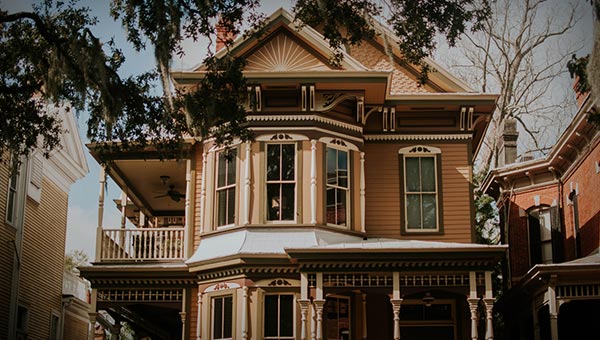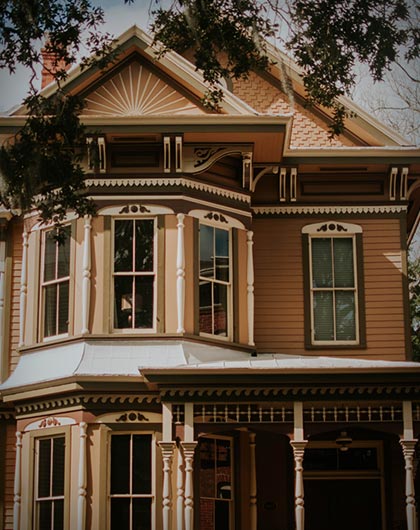
Mold in old buildings is a silent, but widespread danger that can ruin the beauty and integrity of our built history. The goal of this piece is to bring attention to this problem and show how good FDP Mold Remediation is at getting rid of and preventing mold.
Due to several circumstances, historical buildings with their rich legacy and architectural attractiveness are more prone to mold infestation. A detailed look into why certain buildings are mold-prone:
Old buildings settle with age. Impact: Settlement can cause fractures and holes that let water in. Mold growth accelerates due to easier moisture accumulation.
Older construction materials decay naturally. Deterioration reduces the building's moisture resistance. Increased water infiltration favors mold.
Many old structures lack modern waterproofing. Impact: Without moisture-resistant barriers, these constructions are more susceptible to water. Mold grows when moisture is trapped inside the building.
Historical structures sometimes lack modern HVAC systems. Impact: Poor ventilation reduces air circulation, making humidity control difficult. Stagnant air and humidity promote mold growth.
New construction uses moisture barriers, whereas historical buildings did not. The lack of moisture barriers reduces water infiltration protection. The result is higher moisture penetration, which promotes mold growth.
Historical buildings may have moisture-trapping architecture. Impact: Ornate moldings, deep alcoves, and elaborate details are hard to dry. Result: Mold grows in hidden wetness.
Preservation may prioritize aesthetics above moisture control. Impact: Critical moisture-fighting maintenance may be overlooked. Insufficient maintenance might cause mold issues.
Historical buildings confront particular mold development issues due to their age, construction methods, and lack of modern moisture management technologies. Specialized management and cleanup solutions for ancient structures are needed to preserve these architectural gems and combat mold.

Old buildings are susceptible to mold growth due to their architecture and construction. Natural resources were used to build these antique structures for their beauty and authenticity. While attractive, these materials absorb moisture and promote mold growth.
Old construction methods didn't focus moisture prevention into the building envelope. Modern structures use improved waterproofing, while past construction methods were less successful. This sensitivity to water ingress greatly increases mold growth in the building.
Historical structures are prone to mold due to porous natural materials and poor moisture control. Preservation of these architectural masterpieces requires specialized care and repair solutions to solve these unique problems.
Mold growth in historical buildings is closely tied to the surrounding environment.
These environmental factors, combined with the unique characteristics of historic buildings, make them prone to mold infestations. Preservation efforts often involve addressing these factors and implementing measures to mitigate moisture-related issues.
Preserving antique buildings requires early mold detection. Recognizing mold symptoms can help solve the problem quickly. What to look for:
Mustiness is a common sign of mold in historical buildings. A foul, earthy scent that persists even after cleaning may indicate concealed mold growth. This odor frequently indicates insufficient ventilation or moisture.
Mold growth is sometimes visible. Check walls, ceilings, and other surfaces for mold. Mold can be black, green, or white. Mold can spread quickly if left untreated, so don't overlook it.
Surfaces can darken from mold. Wall and ceiling stains, especially in wet places like bathrooms and basements, may indicate mold growth. These stains may indicate a deeper issue than water damage.
Historical buildings sometimes have mold-prone timber. Check timber beams, columns, and flooring for degradation. Mold weakens wood and affects building structure.
Historical buildings with mold pollution can harm residents and workers. It can worsen allergies and respiratory disorders, causing sneezing, coughing, itchy eyes, and difficulty breathing. Mold may cause sudden health concerns in building inhabitants.
Some parts of ancient buildings are more likely to get mold because of the moisture in those buildings. Because they don't have enough airflow, basements, attics, and crawlspaces are often hotspots. Also, places like bathrooms and kitchens where water is used a lot can be at risk.
We at FDP Mold Remediation are experts at fixing mold problems in old buildings professionally. Our team of mold removal experts knows how to deal with the unique problems these buildings present and uses specialized methods to get rid of mold while protecting the structure of the building.
It is very important to hire professionals to get rid of mold, especially in old buildings. Doing it yourself to try to get rid of mold can cause more damage and might not get rid of the mold completely, which can cause problems to happen again and again. Professionals, on the other hand, have the right tools and knowledge to correctly figure out how bad the problem is and put in place solutions that work and last.
Several things make our mold remediation company stand out from its competitors:
Our case studies and customer feedback show how dedicated we are to doing a great job. Customers always say nice things about how we can handle tricky mold problems in old buildings quickly and without affecting the property's historical value.
Mold in old houses is a big problem that needs to be fixed by a professional. FDP Mold Remediation has the skills to deal with this problem, which will help protect our architectural history for future generations. When you hire FDP Mold Remediation, you're not just getting a mold removal service; you're also investing in the long-term health and beauty of your historic home.



